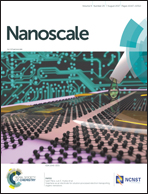Inhibitors or toxins? Large library target-specific screening of fullerene-based nanoparticles for drug design purpose†
Abstract
Fullerene-based nanoparticles have been the subject of vital interest due to their unique properties and potential application in many areas, including medicine. Here we explore their characteristics that could make them prospective leads for known disease-related proteins. High-throughput virtual screening supported by comprehensive multi-software protein–ligand docking simulation and cheminformatics approaches has been applied in investigation of interactions of 1117 proteins with a 169 fullerene nanoparticles decorated with different small molecules. Moreover, obtained docking results were confirmed by the series of unrestricted all-atom molecular dynamics (MD) simulations. Hydrophobicity of fullerene core along with hydrophilic interaction of side chains plays a key role in binding with the studied proteins. We identified a series of nanoparticles that can lead to development of robust drugs for target proteins and another series that can behave as a highly toxic agent. The structure–activity relationship analysis revealed two significant molecular properties responsible for the binding score values. The application of carefully selected computational techniques and described outcome of the study facilitate development of functional fullerene nanoparticles for drug-like and drug delivery applications.



 Please wait while we load your content...
Please wait while we load your content...